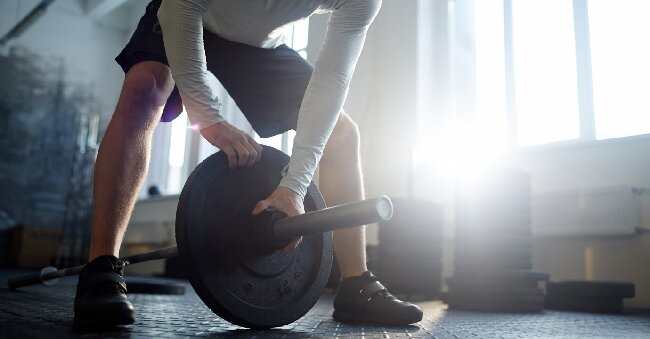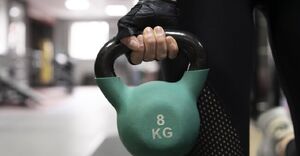
The Key Role of Protein and Resistance Training in Preserving Muscle Mass After 50
As we age, maintaining muscle mass becomes increasingly important for overall health and well-being.
We will discuss the key role that protein and resistance training play in preserving muscle mass after the age of 50, exploring the importance of protein, how much you need, and the benefits of resistance training for older adults.
Learn how protein supports muscle growth and maintenance, how resistance training stimulates muscle growth, and how these factors work together to preserve muscle mass.
Discover tips on incorporating protein and resistance training into your routine, recommended protein sources for older adults, sample resistance training exercises, and other factors to consider for preserving muscle mass after 50, such as the importance of adequate sleep, a balanced diet, and overall physical activity.
If you’re looking to maintain muscle mass and stay strong and healthy as you age, continue reading to learn more about the crucial role of protein and resistance training in your fitness routine.
The Importance of Muscle Mass After 50
Maintaining muscle mass after the age of 50 is crucial for overall health and well-being.
Loss of muscle mass, a condition known as sarcopenia, is a common consequence of aging, leading to decreased strength, mobility, and independence. As individuals grow older, the natural aging process brings about changes in muscle composition, making it vital to actively work towards preserving muscle integrity.
Protein, a fundamental building block for muscle tissues, plays a pivotal role in supporting muscle health by aiding in repair and growth. Engaging in resistance training exercises is key to maintaining muscle mass, as it challenges the muscles to adapt and grow stronger, ultimately enhancing functional strength and mobility.
What is Protein and Why is it Important?
Proteins are essential macronutrients that play a key role in various bodily functions, including muscle building, repair, and maintenance. They are composed of amino acids, the building blocks of muscle proteins, vital for overall health and well-being. Consuming an adequate amount of protein is crucial for adults to support muscle health, promote proper body composition, and ensure optimal physical performance. Incorporating protein-rich foods into your diet can help meet your body’s protein requirements and contribute to overall health and nutrition.
Protein intake is particularly important for those engaging in regular physical activity or strength training, as it aids in muscle repair and recovery post-exercise. Active individuals often have higher protein needs to support the growth and maintenance of muscle mass. Foods such as lean meats, dairy products, eggs, legumes, and tofu are excellent sources of protein that can be included in a balanced diet to enhance muscle health. The timing of protein consumption throughout the day can also influence muscle protein synthesis and adaptation to training.
How Much Protein Do You Need?
Determining the optimal protein intake for adults, especially the elderly, is crucial for maintaining muscle health and function.
Protein plays a vital role in supporting muscle mass, aiding in tissue repair, and boosting immune function in older individuals. The Recommended Dietary Allowance (RDA) for protein is approximately 0.8 grams per kilogram of body weight, but some studies suggest that seniors may benefit from up to 1.2 grams to 1.5 grams of protein per kilogram of body weight. Consuming a variety of protein-rich foods such as lean meats, fish, eggs, dairy, legumes, and nuts can help ensure adequate intake. A balanced diet that includes fruits, vegetables, whole grains, and healthy fats is key for overall well-being and longevity.
What is Resistance Training and Why is it Important?
Resistance training is a form of exercise that involves working against a force to build strength, enhance muscle function, and improve overall physical performance. It plays a crucial role in maintaining muscle health, promoting muscle strength, and preserving muscle function over time. By engaging in resistance exercises regularly, individuals can enhance their muscle strength, improve body composition, and support overall health and well-being.
Resistance training has been shown to significantly impact daily functional movements, posture, and joint stability. The benefits extend beyond mere aesthetics; stronger muscles contribute to better support for joints, reducing the risk of injury and enhancing stamina for various physical activities.
Incorporating resistance exercises into one’s fitness routine can help increase metabolism, aid in weight management, and boost energy levels. This versatile form of training not only enhances physical performance but also fosters a sense of confidence and empowerment in individuals striving for better health.
What are the Benefits of Resistance Training for Older Adults?
For older adults, engaging in resistance training offers numerous benefits that contribute to overall health and well-being. These benefits include improved muscle recovery, enhanced muscle maintenance, increased strength, and muscle-protecting effects. By incorporating resistance exercises into their regular routine, older adults can counter age-related muscle loss, promote muscle health, and support functional independence.
Resistance training has been shown to boost metabolism, increase bone density, and aid in weight management for older individuals. The progressive nature of resistance exercises allows for continuous improvement in muscle strength and endurance, which is crucial for maintaining mobility and reducing the risk of falls. Resistance training can help alleviate symptoms of chronic conditions such as arthritis and osteoporosis by enhancing joint stability and bone strength. The holistic benefits of resistance training make it a valuable component of a healthy aging lifestyle.
The Role of Protein and Resistance Training in Preserving Muscle Mass After 50
Protein and resistance training play a vital role in preserving muscle mass after the age of 50.
As individuals age, there is a natural decline in muscle mass due to reduced protein synthesis and increased muscle protein breakdown. This process, known as muscle protein turnover, can be slowed down and even reversed through the combination of protein-rich diets and regular resistance training. Protein serves as the building block for muscle repair and growth, while resistance exercises stimulate muscle fibers, leading to increased strength and functionality. This collaborative approach not only helps in maintaining muscle mass but also improves metabolic health and overall physical performance in older adults.
How Protein Supports Muscle Growth and Maintenance
Protein is essential for muscle growth and maintenance due to its role in protein synthesis and the production of muscle proteins. High-quality proteins provide amino acids necessary for muscle repair, recovery, and overall muscle health benefits. By consuming adequate protein with proper timing and quality, individuals can support muscle growth, enhance muscle recovery, and maintain optimal muscle function throughout life.
Protein plays a crucial role in regulating metabolism, energy production, and immune function, all of which are vital for supporting overall physical performance and well-being. A consistent intake of protein, especially after exercise, helps to stimulate muscle protein synthesis, aiding in the repair and rebuilding of muscle tissues. Opting for sources of complete proteins, such as meat, fish, eggs, and dairy products, ensures that the body receives all essential amino acids required for efficient muscle maintenance and growth.
How Resistance Training Stimulates Muscle Growth and Maintenance
Resistance training stimulates muscle growth and maintenance through the process of muscle building, repair, and adaptation. By challenging muscles with resistance exercises, individuals trigger muscle protein synthesis, leading to muscle growth and repair. This process enhances muscle strength, improves muscle function, and supports overall muscle health. Incorporating resistance training into fitness regimens can help individuals build lean muscle mass, prevent muscle degradation, and promote long-term muscle health.
Resistance exercises stimulate the release of growth factors and hormones like testosterone and growth hormone, which further contribute to muscle growth and repair. The repeated stress placed on muscles during resistance training causes micro-tears in the muscle fibers, which prompts the body to repair and rebuild them stronger and larger. This continuous cycle of breakdown and repair is essential for muscle adaptation and development. Resistance training also increases muscle fiber recruitment, resulting in improved neuromuscular coordination and efficiency during physical activities.
How Protein and Resistance Training Work Together to Preserve Muscle Mass
Protein and resistance training synergistically work together to preserve muscle mass, enhance muscle health, and optimize muscle function.
Protein intake supports muscle preservation by providing essential nutrients for repair and growth, while resistance training stimulates muscle maintenance and strength. The combination of these two elements not only helps in maintaining muscle mass but also plays a crucial role in improving muscle functionality and overall health.
Adequate protein consumption ensures that the body has the building blocks necessary to repair and build new muscle tissue, while resistance training challenges the muscles, leading to adaptations that result in increased strength and endurance. This harmonious relationship between protein and resistance exercises creates an environment conducive to long-term muscle health and functionality.
How to Incorporate Protein and Resistance Training into Your Routine
Incorporating protein and resistance training into your routine is essential for maintaining muscle health and promoting overall well-being. Establishing an exercise regimen that includes targeted resistance exercises and adequate protein intake can help build lean muscle mass, support muscle recovery, and optimize muscle function. Timing your protein consumption around workouts to facilitate muscle repair and growth is crucial for maximizing the benefits of resistance training and achieving desired muscle health outcomes.
Focusing on muscle recovery strategies such as adequate rest, hydration, and incorporating stretching or yoga into your routine can aid in muscle repair and reduce the risk of injury.
Ensuring that you are consuming high-quality protein sources like lean meats, eggs, dairy, legumes, and protein supplements can support muscle growth and repair post-workout. It is also essential to pay attention to your body’s signals and adjust protein intake based on your activity levels and individual needs for optimal performance and recovery.
Recommended Protein Sources for Older Adults
For older adults looking to maintain muscle health and promote optimal recovery, incorporating recommended protein sources into their diet is essential.
These protein sources provide a variety of essential nutrients, including high-quality amino acids that are crucial for muscle synthesis and repair.
For instance, lean meats like chicken and turkey are excellent sources of protein and also offer important minerals like iron and zinc.
Fish such as salmon and tuna provide omega-3 fatty acids that have anti-inflammatory properties, aiding in muscle recovery.
Dairy products like Greek yogurt and cottage cheese are rich in protein and calcium, which is essential for bone health in older adults.
Sample Resistance Training Exercises for Older Adults
Sample resistance training exercises tailored for older adults can help improve muscle recovery, maintenance, and functionality. These workouts focus on engaging major muscle groups, enhancing muscle strength, and promoting joint flexibility to support overall physical well-being.
- Incorporating exercises such as bodyweight squats, chair squats, resistance band leg lifts, and seated rows can specifically target muscle groups crucial for maintaining balance and stability.
- Including exercises like bicep curls, tricep extensions, and shoulder presses can enhance upper body strength and improve functional abilities for daily tasks.
- Incorporating exercises that focus on core strength, such as planks and bird-dogs, can help older adults improve posture, prevent falls, and support spine health.
These resistance training exercises not only aid in maintaining muscle mass but also contribute to better functional capacity and overall quality of life.
Other Factors to Consider for Preserving Muscle Mass After 50
In addition to protein intake and resistance training, several other factors play a crucial role in preserving muscle mass after the age of 50. Maintaining adequate sleep patterns, balancing hormones, and engaging in regular physical activity are essential components of muscle health promotion. Addressing muscle atrophy risks, understanding protein requirements, and managing aging-related changes can further support efforts to preserve muscle mass and enhance overall muscle health.
Ensuring a good night’s sleep is vital as the body repairs and rebuilds muscles during rest. Hormonal changes associated with aging, such as decreased testosterone and growth hormone levels, can impact muscle mass. By staying physically active through a combination of strength training and cardiovascular exercises, individuals can maintain muscle strength and flexibility. Maintaining a diet rich in high-quality proteins like lean meats, fish, eggs, and plant-based sources is crucial for muscle repair and growth post-50.
Importance of Adequate Sleep and Recovery
Adequate sleep and recovery are vital for supporting muscle health, repair, and maintenance processes. During sleep, the body undergoes muscle repair and growth, essential for maintaining muscle health benefits and promoting overall well-being.
It is during sleep that crucial processes like protein synthesis peak, aiding in the repair and growth of muscles. This repair process helps muscles recover from the stress placed on them during workouts, ensuring they adapt and grow stronger.
Sufficient sleep enhances muscle recovery by regulating hormones like cortisol and growth hormone. Creating a conducive sleep environment, maintaining a consistent sleep schedule, and aiming for 7-9 hours of quality sleep each night are key factors for optimizing muscle recovery and performance.
Incorporating rest days in your workout routine allows muscles to recover and adapt, reducing the risk of overtraining and injuries.
Importance of a Balanced Diet and Overall Physical Activity
Maintaining a balanced diet and engaging in regular physical activity are key components of muscle health promotion and overall well-being.
Adequate protein intake is crucial for building and repairing muscle tissue, while vitamins and minerals play a vital role in supporting muscle function. Regular exercise not only strengthens muscles but also helps maintain bone density, joint flexibility, and overall physical health.
By incorporating a variety of nutrient-dense foods such as lean proteins, whole grains, fruits, and vegetables, individuals can fuel their muscles effectively and optimize performance. Strength training exercises, cardiovascular activities, and flexibility routines should be incorporated into a well-rounded fitness regimen to promote muscle health and overall wellness.




No Comments